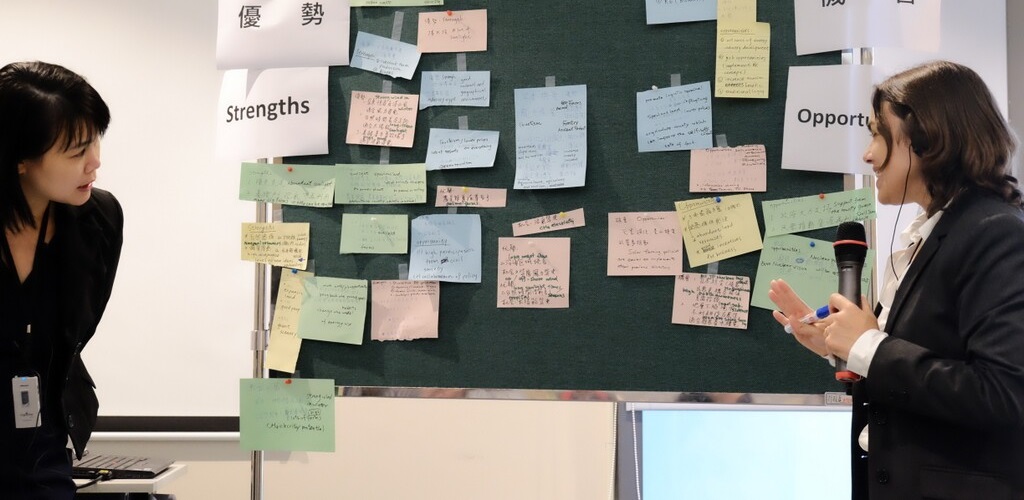


Climate change poses significant risks to many cities, threatening health, food production, water security, livelihoods, the economy, and nature.
In 2016, the Paris Agreement entered into force, ratified by 176 countries, giving a global response to the threat of climate change (UNFCCC, 2018). In the European Union, the Member States consider that climate neutrality must be achieved by 2050 to ensure a transition in line with the Paris Agreement (European Council, December 2019).
Agenda 21’s moto: “Thinking globally, acting locally”. The engagement of in-country stakeholders, local governments, communities and businesses is essential to reach climate-neutrality. Are you interested in measuring and reducing the greenhouse gas emissions of your programme, region or community, and eventually offsetting the residual?

Cities and urban areas are particularly exposed to climate change impacts, due to high concentration of infrastructure and people, including disadvantaged communities, the elderly and people with disabilities. More than half of the people live in urban areas. By 2050, it is expected that two-thirds of the world population will be living in urban areas.
Access to food, potable water, sanitation, energy supply, transport, health services, education and jobs are just some of the basic needs of the population that are subject to multiple disruption factors, particularly in the event of extreme weather events, coastal and river flooding. Climate change impacts, such as flooding and heat waves, are leading to losses and damages to key infrastructure across water and food systems, threatening health, food and water security and livelihoods.

There are numerous opportunities for energy savings in urban systems, from buildings and transport systems to water treatment and street lighting.
Approximately 75% of the existing buildings are estimated to be energy-inefficient, meaning that 3 out of every 4 existing buildings wastes significant amounts of energy, representing a huge opportunity for energy savings.
Energy-efficient home renovation has multiple benefits for the residents, both home-owners and tenants - It reduces the energy bill and health risks while improving comfort, appearance and fighting energy poverty, among other advantages.
Energy-efficient buildings also delivers multiple benetifs to the communities - Building renovation creates jobs, contributes to more attractive neighborhoods, lowers the investments needed for urban energy infrastructure, lowers the environmental impacts of buildings and contributes to climate protection.
Nevertheless, energy efficiency in buildings, particularly residential buildings, continues to be one of the most challenging sectors for the implementation of measures at scale and requires an integrated approach.
Saving energy is clearly a win-win solution.

Clean and sustainable renewable energy can deliver multiple benefits to communities, including improved air quality due to less burning of fossil fuels, as well as reducing the dependency on energy imports and the exposure to the fluctuations of fossil fuels' prices. Overall, clean and sustainable energy can also translate into more reliable and affordable energy, both to large industrial, commercial and institutional consumers, as well as to small residential consumers.
In parallel, renewable energy is becoming increasingly cost competitive, offering citizens, businesses and communities the opportunity to use local/regional energy resources to improve access and security of supply, while keeping money circulating in the regional economy.
Do you need support to assess the viability of renewable energy initiatives, projects or innovative business concepts? Are you spearheading a programme supporting the development of decentralized energy systems? Is your country or region seizing the endogenous renewable energy potential to grow the economy?

In Europe, the energy wasted as heat by conventional electricity power plants exceeds the heat consumed by all buildings (Heat Roadmap Europe, 2019). District heating and cooling systems have the potential to significantly increase the efficiency of primary energy use by seizing locally available surplus heat or free natural cooling, by enabling energy cascading between different consumers and enhancing the integration of renewable energy. Smart district energy systems also offer the opportunity for sector coupling between heating / cooling and the electricity system.
Governments can leverage their different mandates, roles and powers to promote district energy in their own buildings, in specific cities or regions. Examples include energy planning and regulation, territorial and urban planning, zoning bylaws and other regulations, coordination of internal and external stakeholders, and infrastructure and budget control.
In 2016, 3021 Italian municipalities were supplied with 100% renewable electricity and 61 Italian municipalities had district heating systems supplied with 100% renewable heating.
Engaging stakeholders in the early planning of new urban development (or redevelopments) enables synergies and cost-savings in infrastructure investments. Integrated urban and energy planning may also avoid locking-in inefficient and carbon-intensive solutions. Are you interested in developing a district energy initiative, concept or business model?

In the European Union Member State Countries, from 31 December 2020 onwards, all new buildings shall be nearly zero-energy, meaning that they will be required to have very low energy needs, which should be covered to a large extent by renewable energy produced on-site or nearby (by force of the Energy Performance of Buildings Directive published in 2010).
How will this affect your business operations and assets’ value? How is your programme or region considering this in planning, operations and infrastructure investment?
How will existing buildings be addressed to decrease their energy consumption? Approximately 75% of the existing buildings are estimated to be energy-inefficient, meaning that 3 out of every 4 existing buildings wastes significant amounts of energy, representing a huge opportunity for energy savings through building renovation. The use and operation of buildings is responsible for 40% of the European Union’s total energy consumption and for 36% of its greenhouse gas emissions. Most of the existing buildings will still be standing decades from now, so energy-efficient deep renovation is an important measure to reduce the environmental impact of buildings, while simultaneously creating jobs in the construction sector at local and regional level.
In large institutional and commercial buildings, professional management often reconizes energy-efficient renovation as a cost-effective measure to reduce operational and maintenance costs, reduce risks and increase productivity and service levels.
However, in residential buildings, despite the multiple benefits of energy efficiency for tenants and landlords, building renovation continues to be one of the most challenging sectors for the implementation of measures at scale and requires an integrated approach.

The construction and buildings sector accounts for about 50% of all materials extracted from nature and is responsible for over 35% of the European Union’s total waste generation. A life cycle approach that enhances material recovery and circularity is needed to make buildings more sustainable.
In addition, approximately 75% of the existing buildings are estimated to be energy-inefficient. Most of the existing buildings will still be standing decades from now, so energy-efficient deep renovation is an important measure to reduce the environmental impact of buildings, while simultaneously creating jobs in the construction sector at local and regional level.
Energy-efficent and resource-efficient buildings protect our health and the health of our planet. Governments can leverage their different mandates, roles and powers to promote energy and material efficiency, in their own operations and at economy-wide scale. Examples include planning, regulation and infrastructure and budget control.
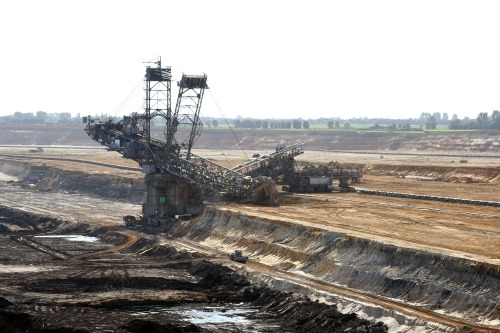
Renewable energy is becoming increasingly competitive in the wholesale electricity market. Some coal fired power plants cannot compete and no longer operate the number of hours needed to ensure their profitability. They are at risk of becoming stranded assets. Not surprisingly in 2018 the net renewable power capacity additions were nearly twice as much as the added capacity of all other sources. This was the 4th consecutive year in which net renewable power capacity additions were larger than the net additions of fossil and nuclear power generation combined (REN21, 2019). In this global context, it is very likely that additional mining regions will cease their activity.
While the coal phase-out will deliver significant climate and air quality benefits at local and global-scales, coal-mining regions will face hardships. How to restructure and to regenerate the regional economic fabric of such regions towards a more prosperous and healthy future?
Both natural and man-made causes can originate systemic transformations in society. The industrial revolution was a very significant transformation, but other events can be counted among the triggers for societal change, such as the replacement of the horse by the automobile as a means of transportation and the adoption of the internet, the smart phone and social media. Scientific and technological development is one of the motors for societal transformations and generally brings about significant economic growth, improved health and quality of life.
At the confluence of technological development and the Nations' agreement on the need for global action to reach climate-neutrality, several major transformations are impending, such as replacement of fossil fuels as source of energy where viable alternatives exist, and the phase-out of the internal combustion engine in private automobiles. While these changes will bring significant benefits globally and locally in terms of climate change mitigation, improved air quality and health, they will also be highly disruptive for the companies, communities and regions that rely heaviliy on them to generate revenue, ensure livelihoods and deliver public services. Distruptions can be expected at the level of generation of value added, public revenues and loss of jobs, not just directly but also significant impacts at the level of the supply chains.
Planned action to manage the transitions is crucial to minimize the negative impacts and to ensure that new opportunities are generated to ensure the livelihoods and economic activity in the affected communities and regions. A very diverse package of actions may be needed, from health care and social protection for the workers to infrastructure development, fostering Rearch & Innovation clusters, and other measures to support investment in economic activities and labour-market integration.
The development and strenghtening of a sound innovation ecossystem and local and regional levels is a success factor for systemic transitions. Bringing together leadership, expertise, resources and supporting the development of networks and partnerships will pave the way for the implementation of locally-adequate solutions.
Measures to promote participatory planning and dialogue is also a success factor, conducive to the development of a shared vision for a better future and ensuring social cohesion and inclusiveness.
Systemic transformations are impending and long-term integrated comprehensive approaches are required to manage the transitions. Both to minimize negative socio-economic impacts and to generate new opportunities for economic development, social cohesion and labour-market integration.
A Theory-of-Change (ToC) is a framework which can be used to support the development of comprehensive and targeted strategies to solve complex social problems that require an integrated, multistakeholder and holistic approach. At the very least, a ToC outlines the pre-conditions, early and intermediate outcomes that must be accomplished to achieve the desired long-term goal or change. The ToC narrative can be further detailed and developed to include the assumptions and explain how the change process will occur and deliver the desired results.
In the context of international development organizations, a ToC often provides an overarching framework under which complementary programmes can be developed. It is also often required in project proposals for grant funds.
The ToC framework is a useful resource to facilitate stakeholder engagement workshops and to produce actionable outputs to manage systemic transitions or change processes. Examples include the collaborative development of a ToC for the local transition to Clean, Sustainable, Resilient and Affordable Energy through a series of stakeholder dialogue workshops.
Governments and communities develop and adopt climate strategies and action plans to achieve a long-term or overall local aim regarding climate change mitigation, such as climate-neutrality by 2050, and enhancing adaptation and resilience to climate change. Developing a specific strategy and action plan gives coherence to the efforts and measures implemented to acheive the long-term climate objective, including through the allocation of responsabilities and resources and the definition of timelines and objectives. This is also an opportunity to coordinate the interventions of different departments and stakeholders, to generate synergies, address conflicting priorities and avoid contradictory actions, thus increasing the overall effectiveness and efficiency of the services provided to the population.
The synergies and contact points between climate strategies and other socio-economic development and environmental policies and plans can be very significant, including urban regeneration, job creation, sustainable mobility, energy-efficient healthy and affordable housing, and inclusion of vulnerable and disadvantaged population groups.
An ambitious Climate Strategy and Action Plan will underpin tranformations, not just at the level of the Local Government's own policies and operations, but also at the community and economy-wide level. Such transformations often require the adoption and implementation of policies, regulations, organizational arrangements, partnerships, mobilization of funding, capacity building, education and awareness raising, among other measures. In other words, the sucessful implementation of a Climate Strategy and Action Plan cannot be acheived alone, by a single organization or government, it must be a collective effort.
Identifying the key actors for the implementation of your Climate Strategy and Action Plan, and engaging them early-on in the development process, is a crucial success factor. These key actors may be able to provide strategic guidance, expertise, data, funding, communication channels and other resources. In addition, bringing together different perspectives, expertise and experiences opens the door to the establishment of networks, cooperation and partnerships a multiple levels and may lead to the co-development of innovative solutions. These may prove particularly valuable to address conflicting priorities and enable systemic transformations.
Typical examples of key stakeholders include national and regional authorities, neighbouring municipalities, engagement of market and financial actors, research and education institutions, professional associations, among others.
Participatory urban planning has multiple advantages in comparison with centralized top-down planning aproaches. Participatory planning is more responsive to community needs, recognizes and mobilizes local knowledge and resources, enables democratic participation and inclusion, facilitates communication and cooperation between economic sectors and population segments, making it easier to address conflicting priorities and enabling the collaborative development of solutions.
Perhaps most importantly, participatory planning contributes to strenghten the identity and cohesion of the community and is, therefore, a determining factor for creating ownership and acceptance of the plan by the local community and ensure its active engagement in the implementation.
Our advisory and consultancy services support public and non-profit organizations in programme and project development, implementation, management and evaluation of initiatives towards Sustainable development. Our thematic areas of expertise include energy efficiency, renewable energy, climate-neutrality, climate finance and circular-economy. We facilitate the development and implementation of country-owned and locally adequate strategies, solutions and transition processes.
The support we provide includes:

To be able to facilitate stakeholder dialogue workshops in a productive manner and geared towards consensus-building and cooperation, it is essential to prepare well. An initial scoping and review phase will provide essential information to support the discussions. The review should provide a comprehensive overview of the current situation, enable preliminary identification of critical aspects and identification of key stakeholders and their priorities and concerns.
This initial scoping and review will also enable the planning of the entire stakeholder engagement process, including channels and formats to be used, convening process, and desired outputs and outcomes.
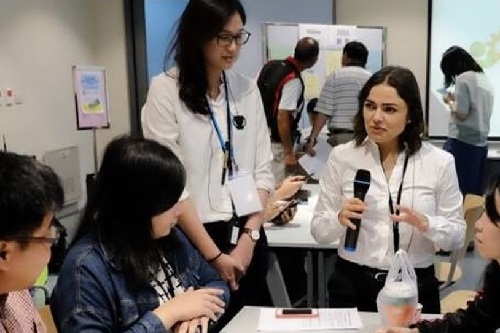
We support organizations and communities in the coordination and facilitation of complex multi-stakeholder engagement processes for the development and deepening of institutional dialoge, cooperations, co-design and local-ownership and participation in the implementation of solutions towards sustainability.
Depending on the desired outputs and outcomes of the stakeholder engagement process, different channels and formats may be selected and developed for implementation. Examples of possible formats for stakeholder engagement include advisory committees, focus groups, facilitated dialogue and consensus-building workshops, among others. Community meetings, for example, are an essential component of participatory governance and of locally-owned and locally-driven climate strategies.
The convening process itself deserves careful consideration. Invitations should present a clear mandate and clear objectives, highlighting the importance of participation and the sought out inputs from the invitee.
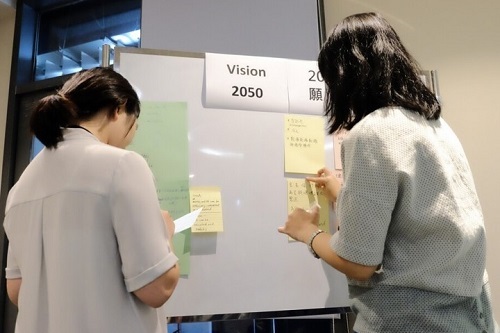
We support Local Governments and communities in the development of overarching programmes and strategies for the transition to clean energy, circular economy and sustainability through the convening and facilitation of stakeholder engagement workshops and other participatory mechanisms.
Stakeholder engagement processes can be used to generate specific outputs of great value for the management of organizational and societal transitions. Examples of possible intended outputs include:
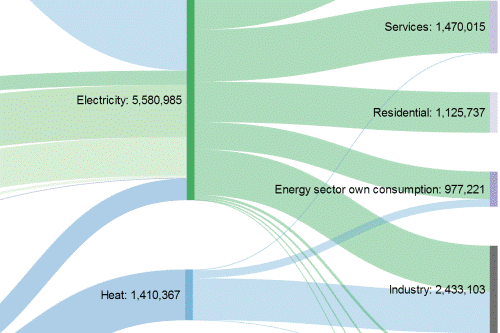
We support Local Governments and communities in multiple roles of the programme and project development cycle, always ensuring that we only engage in processes where we have no conflict of interests. Examples include:
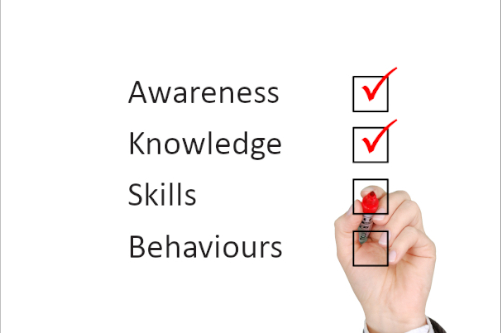
We support Local Governments and communities in the development and implementation of capacity-building programmes on clean energy, climate-neutrality, circular economy and sustainability for different target-groups, namely for staff, technical staff, public desision-makers, partner organizations or stakeholders, depending on the existing needs.
Once the overall objectives and target-group(s) of the training are well defined, different methods can be used to assess the existing capacity building needs depending on the size and heteregeneity of the target-group(s). Examples include carrying-out semi-structured interviews and conducting surveys. The processing of the results will inform the next steps and help define specific training objectives.

Building on the capacity building needs identified and on any eventual learning resources already available, the training delivery channels and formats are selected and the training program is developed. Possible formats include face-to-face training and remote online training in synchronous mode - to enable direct interaction between the trainer and trainees - and assynchronous mode - to enable the trainee to study and learn at his/hers own pace.
This step includes developing the course sylabus, the materials for training delivery, the learning materials to support study, as well as communication materials to disseminate the training.
A preliminary training run can be used to test the training's structure and contents, and to obtain inputs for their improvement and further dissemination.
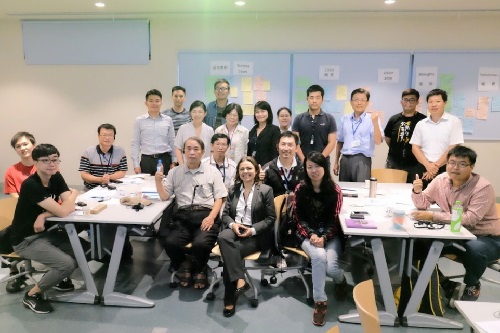
To be effective in contributing to behaviour change, all the training modules include elements to enhance the motivation, knowledge and skills of the trainees.
Training is delivered according to the training plan, making use of the learning resources and encouraging active participation throughout. Group dynamics are encouraged to the extent possible, as a mechanism for exchange of experiences, building a better understanding of the subjects, facilitating team building and development of a support network, and promoting the further emotional connection and commitment of the trainees.
The methodologies that are most suitable for the achievement of the training objectives are used. Whenever possible, hands-on methodologies are preferred, as these tend to be the most effective for learning new skills.
Questions are encouraged and clarified throughout the training.
At the end of training, the Trainees' performance is evaluated against the learning objectives.

At the end of training, the Trainees are invited to evaluate the training in its different components. The input received is then used to improve the training program and materials for a next training cycle.
If possible, six months after the end of training, the Trainees are again invited to evaluate the training by providing information on how they have used their new learned knowledge and skills in their own work. The input received is then used to improve the training program and materials for a next training cycle, while also supporting further dissemination of the training.
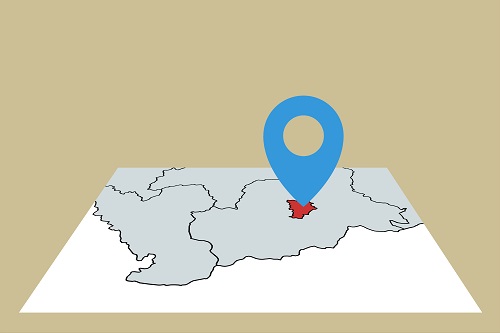
The first step is to understand the requirements and expectations that your Climate Strategy must meet. For example, are your efforts to be seamlessly integrated with the National Climate Action Plan and therefore the use of compatible monitoring and reporting methodologies is mandatory and pre-determined? Is the Climate Strategy to be developed as the local contribution to the Covenant of Mayors for Energy and Climate - an initiative specifically developed for Local-Governments? Is your Climate Strategy built around a particular unique feature of your local community or a sector that is of major relevance to the local economy? Which sectors and activities, at community-scale and in own operations, should be covered? The answers to these and other scoping questions will condition the choice of methods for defining targets, quantifying greenhouse gas emissions, monitoring and reporting.
We can support you in the implementation of methodologies such as:

Once the scope and methodology are clearly defined, it is time to start developing your community's Greenhouse Gas (GHG) emissions and removals inventory - it will provide crucial information to inform the planning phase. We will support you in implementing a process to ensure that your inventory follows the best-practices' principles and eases quality assurances and verification. This process often includes liaising and fostering partnerships with relevant stakeholders who can provide relevant data for the development of the inventory and who might actively contribute to the implementation and monitoring of the Climate Strategy - examples include the national statistical agency, ministries and research institutions. Principles such as relevance, completeness, consistency, transparency and accuracy should be observed. These principles are crucial to ensure that the inventories of different years are coherent and comparable, thus enabling future monitoring and evaluation of performance in the implementation of the Climate Strategy and Action Plan. The following inventories should be planned for:
The GHG emissions inventory is complemented with additional information to complete the characterization of the starting point.
"Business-as-usual" scenarios are developed to assess how the situation will likely evolve in the absence of the Climate Strategy and Action Plan. This initial assessment will inform the next planning steps.

Mapping and engagement of key stakeholders, both internal and external, is highly recommended for the success of the entire initiative. Establishing an open and constructive dialogue between the partners will bring to light different perspectives, expertise and data, and open possibilities for cooperation and synergies. A diverse and inclusive engagement process will enable the co-development of locally-adequate strategies and solutions to address even the most complex situations. The more inclusive and participatory your planning process is, the more likely it is that you will get a broad base of support, buy-in and local ownership, all of which will be crucial for a successful implementation of the Climate Strategy and Plan.
Experts should be engaged explicitly in each stage of the stakeholders' dialogue to ensure that the necessary expertise and preliminary technical assessments are made available in a timely and transparent manner to support productive dialogues and help determine the feasibility of promissing options suggested for consideration. This follow-up will help build consensus regarding the way forward.
Possible activities with which we can support you include:
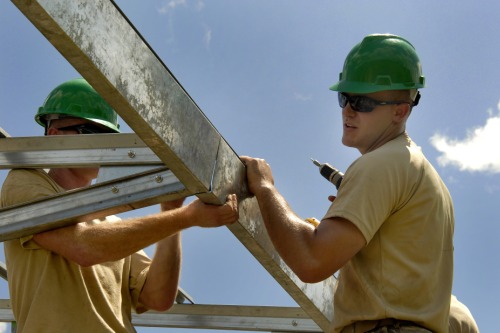
We can support you in different implementation stages and activities, including in seeking funding, establishing partnerships and training staff and partners. Possible activities we can deliver include:
We can also support you in the implementation of the monitoring plan and evaluation of progress against the Climate Strategy and Plan's objectives, including components such as greenhouse gas emissions, energy savings, cost savings, improvement of environmental parameters, among other aspects that may be relevant for your community.
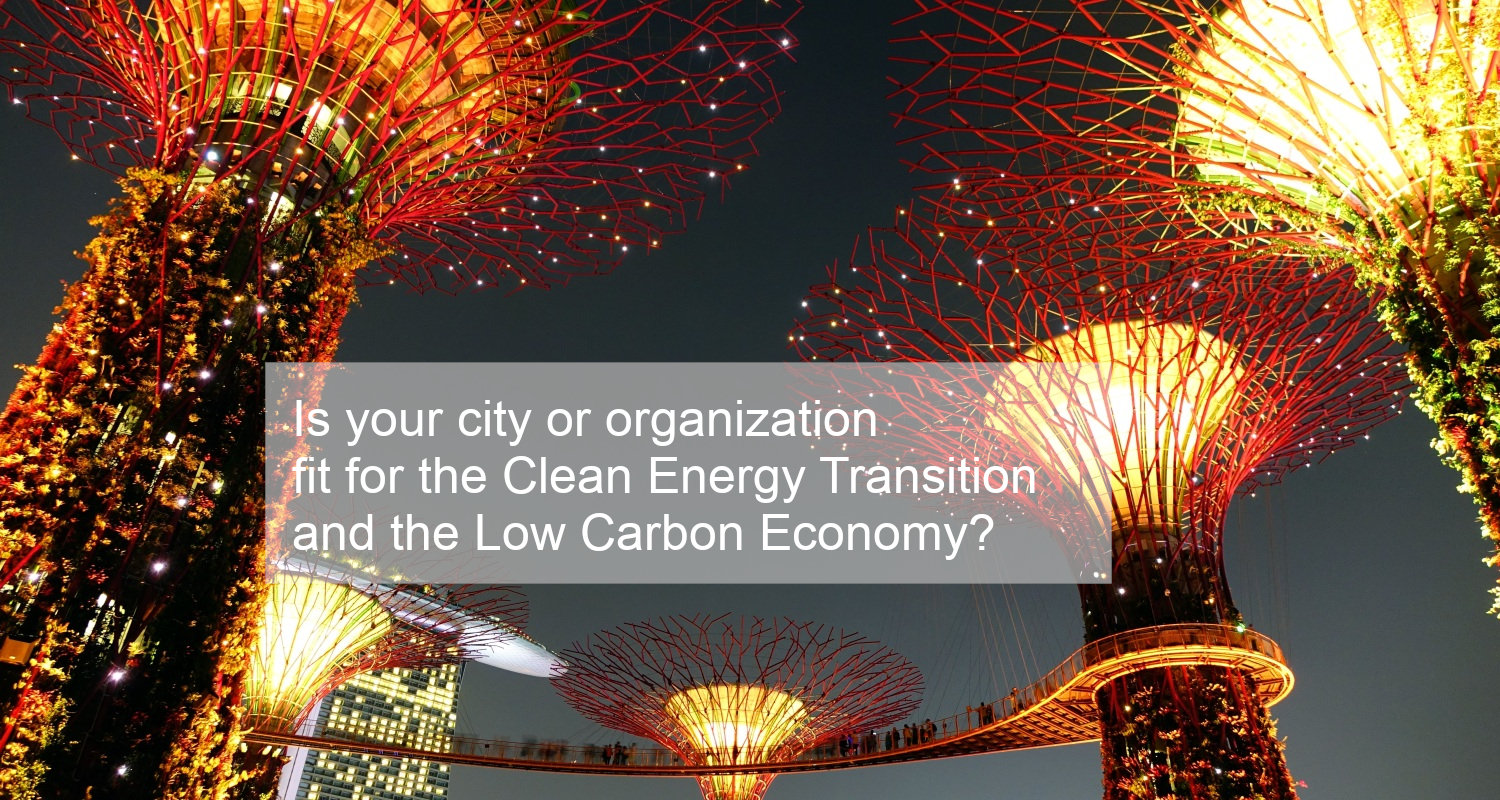
Is your organization fit for the Clean Energy Transition and the Low-Carbon Circular Economy?Seize the Potential of energy savings and decarbonization to save money and resources, to future-proof investments and increase service delivery, while safeguarding human health and the environment and stimulating the local economy.We are experts on strategies and solutions towards Clean Energy and Sustainability.Get in touch, we will be glad to support you in defining and implementing the best sustainability strategy and solutions for your organization, region or community. |
There has been a noticeable convergence on the level of interest regarding some of the topics related to Energy, Climate and Environment at global level over the last decade. While in the 2000s the interest for Environmental Management and Energy Management declined, perhaps as these practices became more widespread, better unserstood and common-practice among companies, the interest in Clean Energy grew progressively, the interest for the Carbon Footprint grew significantly between 2005 and 2007. Singularly, the interest for Energy Efficiency was at a higher level in the 2000s than it has been in this last decade, with a period of enhanced interest between the economic crisis of 2008 and 2010. These trends can be observed in the graphic below.
The graphic below shows the trend of internet searches on the topics of Energy efficiency, Energy management, Clean Energy, Carbon footprint and Environmental Management from 2004 to 2022. The data reflects the volume of searches conducted through the Google search engine within this period and is provided directly by Google Trends.
Source: Google Trends. Status as of 2022-03-22.